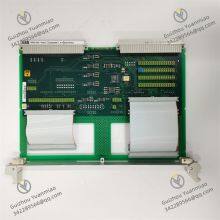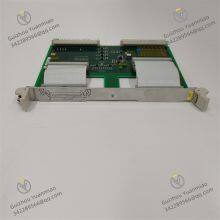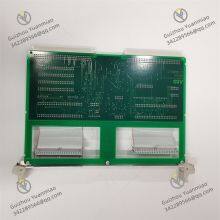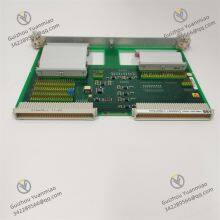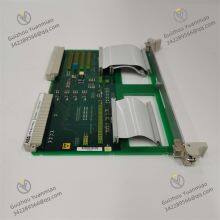Material
Other, Global universal model
Condition
Other, Global universal model
Task
Other, Global universal model
Mathematical Model
Other, Global universal model
Signal
Other, Global universal model
Customized
Non-Customized
Structure
Other, Global universal model
ABB 500TRM02 1MRB150011R0001
ABB 500TRM02 is a Temperature Input Module of the AC 500 series PLC, mainly used for collecting temperature signals in industrial fields and converting them into digital quantities processable by the PLC. It supports access to multiple temperature sensors and serves as a core component for temperature monitoring in scenarios such as process control and energy management.
Features
Efficient Data Processing: Equipped with fast data processing capabilities, ensuring real-time system response and stable operation. It can promptly handle various data and signals from industrial sites, meeting the real-time requirements of industrial automation processes.
Modular Design: Adopts a compact structural design for easy integration into existing systems. It allows flexible expansion of system functions according to actual needs, facilitating deployment and application in different industrial automation scenarios.
High Reliability: Utilizes industrial-grade components with anti-interference capabilities, adapting to harsh industrial environments such as high temperature, humidity, and strong electromagnetic interference, ensuring stable operation under adverse conditions.

Working Principle of ABB 500TRM02 ModuleI. Hardware Architecture and Signal Processing Chain
Sensor Interface and Signal Acquisition
Thermocouples (e.g., types K, J, T, E, R, S, B): Obtain temperature by measuring thermoelectromotive force.
Resistance Temperature Detectors (RTDs): Such as PT100, PT1000, which measure temperature using the characteristic that resistance changes with temperature.
Analog Input (4-20mA/0-10V): Compatible with standard signals output by other temperature transmitters.
Signal Conditioning and Analog-to-Digital Conversion (A/D Conversion)
Signal Conditioning:
Amplifies and filters the weak signals output by sensors (such as mV-level voltage from thermocouples and resistance changes from RTDs) to eliminate noise interference.
A/D Conversion:
Converts analog signals into digital quantities through high-precision analog-to-digital converters (such as 16-bit ADC). The conversion accuracy determines the resolution of temperature measurement (e.g., ±0.1℃).
Temperature Linearization and Calibration
Linearization Calculation:
The output of sensors is not strictly linear with temperature (e.g., the electromotive force-temperature curve of thermocouples is nonlinear). The module has built-in algorithms (such as polynomial fitting and look-up table methods) to linearize raw data and restore the true temperature value.
Calibration Mechanism:
Supports hardware calibration (via external standard sources) and software calibration (setting offset and gain coefficients in PLC programming software) to ensure measurement accuracy.
II. Data Processing and Communication Principles
Internal Data Processing Flow
Digital Encoding:
The digital values after A/D conversion are parsed by the internal processor (such as a microcontroller) of the module, and temperature values are calculated by combining sensor type parameters (such as the PT100 graduation table).
Engineering Unit Conversion:
Converts digital quantities into engineering units (℃ or ℉) and stores them in the module's registers (such as the input image area) for the PLC main controller to read.
Communication Mechanism with PLC System
Backplane Bus Communication:
Interacts with the CPU module in real-time via the backplane bus (such as the S2 bus) of the AC 500 rack. The PLC periodically scans the module registers to obtain temperature measurement values.
Data Transmission Protocol:
Follows the internal communication protocol defined by ABB, supporting high-speed data exchange (such as a refresh cycle ≤1ms per channel) to ensure real-time performance.


III. Key Technical Characteristics and Working Logic
Anti-Interference and Reliability Design
Electrical Isolation:
Photoelectric isolation (isolation voltage ≥500VAC) is adopted between each channel and internal circuits to prevent on-site interference from affecting module operation.
Fault Detection:
Monitors abnormal states such as sensor disconnection, short circuit, and out-of-range in real-time, alarms through LED indicators (such as ERROR, CHx FAULT), and sends fault codes to the PLC.
Thermal Compensation and Environmental Adaptation
Cold Junction Compensation (for thermocouples):
Thermocouple measurement requires the known temperature of the reference junction (cold junction). The module has a built-in temperature sensor to monitor its own temperature and automatically compensate for cold junction errors.
Environmental Temperature Adaptation:
The operating temperature range is typically -20℃ to +60℃. Through hardware heat dissipation design and software temperature drift correction, stability in industrial environments is ensured.
IV. Schematic Diagram of Working Process
Sensor signal (temperature→physical quantity) → Signal conditioning (amplification, filtering) → A/D conversion (analog→digital) ↓ Linearization calculation (based on sensor characteristics) → Engineering unit conversion (digital value→temperature value) ↓ Store in module registers → Transmit to PLC CPU via backplane bus ↓ PLC program calls temperature data → Achieve monitoring and control logic
V. Differentiated Principles from Similar Modules (Taking 500TRM01 as an Example)
| Comparison Dimension | 500TRM02 | 500TRM01 |
|---|
| Channel Type | Supports mixed input of thermocouples, RTDs, and analog quantities | Only supports single input of thermocouples or RTDs |
| Cold Junction Compensation Method | Automatic compensation by built-in temperature sensor | Some models require external cold junction compensation circuits |
| Resolution | 16-bit (±0.1℃) | 14-bit (±0.5℃) |
| Application Scenarios | Complex temperature monitoring (mixing multiple sensor types) | Simple temperature measurement with single sensor type |


VI. Working Principle Example in Application Scenarios
Case: Temperature Monitoring of Chemical Reactor
Signal Acquisition: The PT100 RTD on the outer wall of the reactor increases in resistance with temperature (e.g., 107.79Ω at 20℃, 138.51Ω at 100℃).
Module Processing:
The module provides a constant current source (such as 1mA) to the PT100 and measures the voltage across it (e.g., approximately 107.79mV at 20℃).
Converts it to a digital value via A/D, matches the PT100 graduation table (such as IEC 60751 standard) through look-up, and calculates the temperature value (20.0℃).
Data Interaction: The PLC reads the temperature value in the module register, compares it with the set value (such as 80℃), and controls the heating/cooling system to act.
VII. Conclusion
The working principle of the 500TRM02 module is essentially a closed-loop process of "physical signal digitization + temperature characteristic analysis + data interaction": it collects sensor signals through hardware interfaces, generates temperature values after conditioning, conversion, and calculation, and then integrates with the PLC system via the bus to finally achieve temperature monitoring and control in industrial fields. Its core technical highlights lie in multi-type sensor compatibility, high-precision linearization algorithms, and anti-interference design, ensuring reliable temperature measurement in complex industrial environments.



